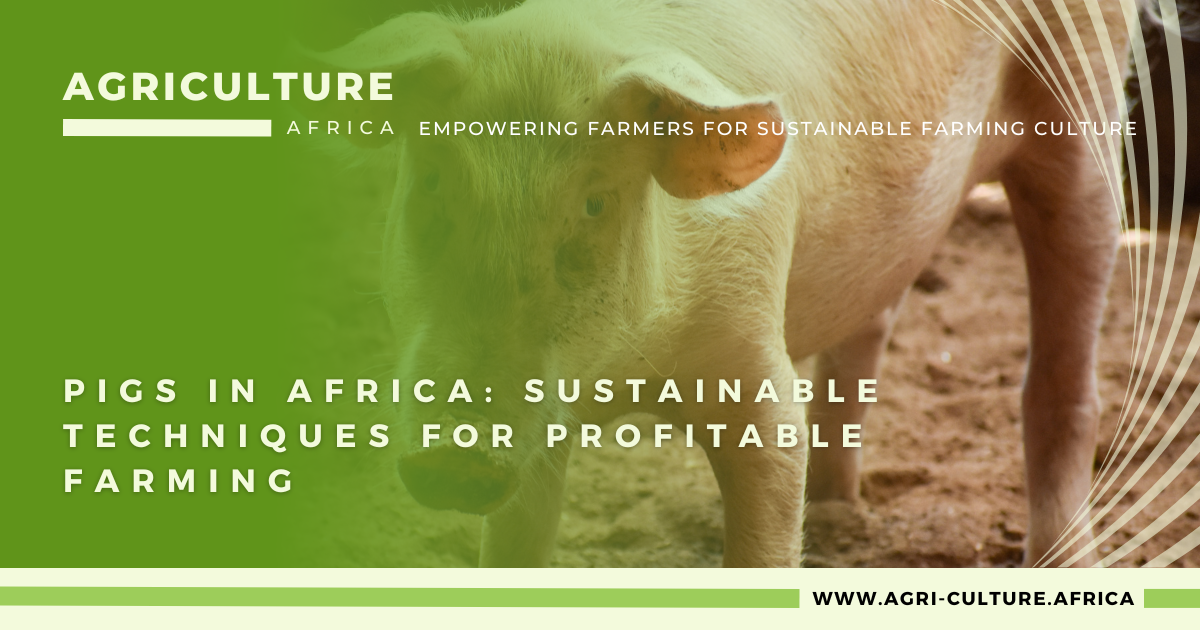Empowering African Farmers for Sustainable Farming Culture

Pig farming requires a clean and comfortable living environment. Drafts, rain, and direct sunlight should be avoided. The floor should be made of concrete, wood, or other easily cleaned and disinfected materials. Furthermore, the pigs should have access to a clean and sufficient supply of water.
Pigs’ nutritional needs differ depending on their age and weight. Young pigs require a high-protein diet, whereas older pigs require a high-fiber diet. Pigs can be fed a variety of grains, such as maize, sorghum, wheat bran, and soybean meal.
Artificial insemination is commonly used to breed pigs. Artificial insemination improves the quality of pig offspring while also lowering the risk of disease transmission between animals.
Piglets are typically born in litters of 8 to 12, with their mothers nursing them for several weeks before weaning them. Piglets are typically raised in a separate housing area after weaning until they are large enough to be integrated with the adult pigs.
African swine fever, foot and mouth disease, and swine influenza are among the diseases that can affect pigs. To reduce the risk of disease transmission, good biosecurity measures, such as the use of disinfectants and footbaths, as well as restricting access to the pig housing area, must be implemented.
Regular veterinary examinations are also required to ensure the pigs’ health and to detect and treat any diseases as early as possible.
The African pig farming industry is rapidly expanding, with many small-scale farmers seeking to enter the market. Pigs can be sold for meat or for breeding, with prices varying according to the animal’s age and weight.
Pig farmers can sell to local markets, and processors, or export to other countries through a variety of marketing channels. Pig farmers must cultivate positive relationships with buyers and ensure that their products are of high quality.
In summary, pig farming in Africa requires proper housing and feeding, breeding and reproduction techniques, health and disease management practices, and effective marketing strategies. With the right approach, pig farming can be a profitable and sustainable enterprise for small-scale farmers in Africa.
Here is a table summarizing some of the key requirements and techniques for pig farming in Africa:
| Aspect | Requirements/Techniques |
|---|---|
| Housing | Clean and comfortable housing area |
| Free from drafts, rain, and direct sunlight | |
| Floor made of concrete, wood, or other | |
| suitable materials | |
| Feeding | High protein diet for young pigs |
| High fiber diet for older pigs | |
| Maize, sorghum, wheat bran, and soybean meal | |
| Breeding | Artificial insemination |
| Weaning piglets | |
| Health and Disease | Good biosecurity measures |
| Management | Regular veterinary check-ups |
| Market and Sales | Selling for meat or breeding purposes |
| Selling to local markets, processors, or | |
| exporting to other countries |
For More Articles
To join Livestock Association